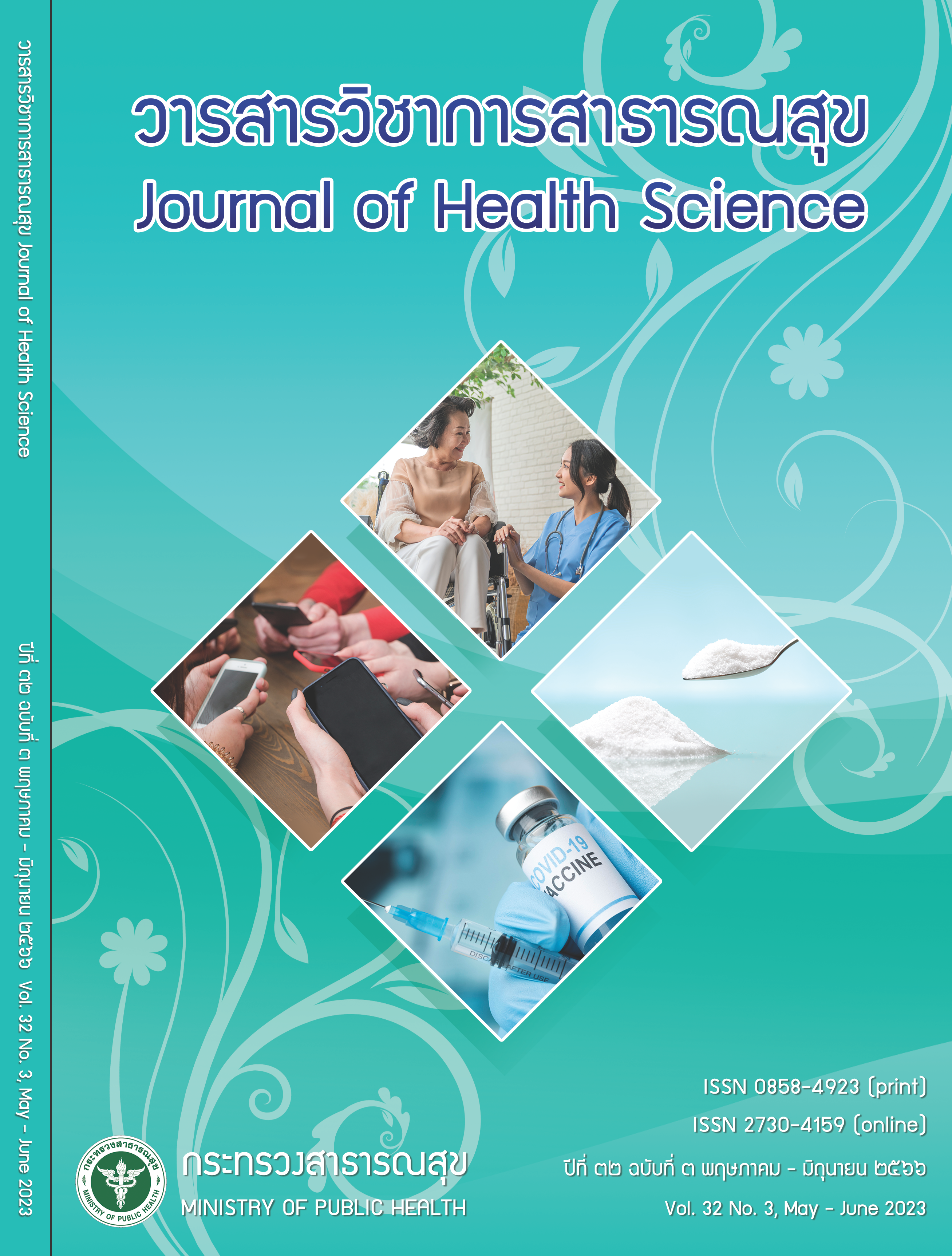Results of Palliative Care Model in the Health Community Network, Nan Province
Keywords:
palliative care, end of life, health community networkAbstract
The purpose of this action research was to develop and evaluate a palliative care model in Tha Wang Pha health community network, Nan province. It was conducted from September 2018 to October 2019. The study consisted of 3 phases: (1) problem analysis; (2) implementation, which was performed in 4 steps: planning, practice, observation & reflex on problems; and (3) evaluation. Purposive sampling was applied to recruit 32 terminal patients with late stage cancer, late stage chronic obstructive pulmonary disease, end-stage renal disease and those diagnosed with terminally ill patients from other hospitals, together with 32 caregivers. The instruments for data collection were (1) a personal data record form, (2) the palliative care model of Tha Wang Pha district health network (3) satisfaction assessment form (FAMCARE-2), (4) Edmonton Symptom Assessment System (ESAS), (5) family satisfaction assessment form for palliative care, (6) Palliative Care Outcome Scale (POS), and (7) good death assessment form. The data were analyzed and present in median and compare before and after by using Wilcoxon matched-pairs test. It was found that the average score of Palliative Care Outcome scale was significantly decreased after the implementation (p<0.05). The average score of caregivers satisfaction (FAMCARE-2) was 90.85% toward palliative care services, which was at high level; and the average score of good dead was 93.75%. In conclusion, the development and evaluation of palliative care model from Tha Wang Pha hospital for the health community network has resulted in positive outcomes of patients; and was useful for supporting terminally-ill patients and their family. Therefore, this system should be an effective model for palliative care in community hospitals.
Downloads
References
ช่อทิพย์ พรหมมารัตน์. ผลของการพัฒนารูปแบบการดูแล แบบประคับประคองที่บ้านเครือข่ายสุขภาพอำเภอบ้านโฮ่ง จังหวัดลำพูน. สาธารณสุขล้านนา 2560;13(1):25-36.
กิตติธร นิลมานัต. การดูแลระยะท้ายของชีวิต.สงขลา: ชานเมืองการพิมพ์ 2555.
กรมการแพทย์ กระทรวงสาธารณสุข. แนวทางการดูแลผู้ป่วย ระยะสุดท้าย. กรุงเทพฯ: กรมการแพทย์ กระทรวงสาธารณสุข; 2557.
วาสนา สวัสดีนฤนาท, อมรพันธุ์ ธานีรัตน์, และธารทิพย์ วิเศษธาร.พัฒนารูปแบบการดูแลผู้ป่วยมะเร็งระยะท้ายแบบ ประคับประคอง โรงพยาบาลมหาราชนครศรีธรรมราช. วารสารพยาบาลกระทรวงสาธารณสุข 2558; 25(1):144- 156.
Donabedian A. An introduction to quality assurance in health care. New York: Oxford University Press; 2003.
World Health Organization. Palliative care [Internet] 2018. [cited 2019 Jun 10] Avialable:from https://www. who.int/news-room/ fact-sheets/detail/palliative-care
Bruera E , Kuehn N, Miller MJ, Selmser P, Macmillan K. The Edmonton Symptom Assessment System (ESAS): a simple method for the assessment of palliative care patients. J Palliat Care 1991;7(2):6-9.
บุษยามาส ชีวสกุลยง, และลดารัตน์ สาภินันท์. แบบประเมิน ระดับผู้ป่ วยที่ได้รับการดูแลแบบประคับประคองวัยผู้ใหญ่ ฉบับสวนดอก. ใน: บุษยามาส ชีวสกุลยง, บรรณาธิการ. การ ดูแลผู้ป่ วยแบบประคับประคอง: palliative care. พิมพ์ครั้ง ที่ 2. เชียงใหม่. การเวียงการพิมพ์; 2557. หน้า 34-46.
ลดารัตน์ สาภินันท์. แบบประเมินความพึงพอใจของ ครอบครัวต่อการดูแลผู้ป่วยแบบประคับประคอง. คณะแพทยศาสตร์ มหาวิทยาลัยเชียงใหม่ 2559.
ลดารัตน์ สาภินันท์. คู่มือการใช้แบบประเมินผลลัพธ์การดูแล ผู้ป่วยแบบประคับประคอง (the palliative care outcome scale: POS). คณะแพทยศาสตร์ มหาวิทยาลัยเชียงใหม่; 2556.
ไพรินทร์ สมบัติ. แบบประเมินการเสียชีวิตอย่างสงบและสง่า งามหรือการตายดี (dead with dignity/good death). น่าน: โรงพยาบาลสมเด็จพระยุพราชปัว; 2556.
นพพร ธนามี, สมพร รอดจินดา, วรวรรณ ชำนาญช่าง. ผลลัพธ์การพัฒนาระบบการดูแลผู้ป่วยแบบประคับประคอง. พุทธชินราชเวชสาร 2557;31(2):183-92.
ภัควีร์ นาคะวิโร. ผลลัพธ์การดูแลของผู้ป่วยมะเร็งแบบ ประคับประคองในโรงพยาบาลพระนครศรีอยุธยา. วารสารสมาคมเวชศาสตร์ป้ องกันแห่งประเทศไทย 2560;7(1):11- 23.
Bruckhardt CS. The impact of arthritis on quality of life. Nur Res 1985;34(1):11-6.
Downloads
Published
How to Cite
Issue
Section
License

This work is licensed under a Creative Commons Attribution-NonCommercial-NoDerivatives 4.0 International License.







